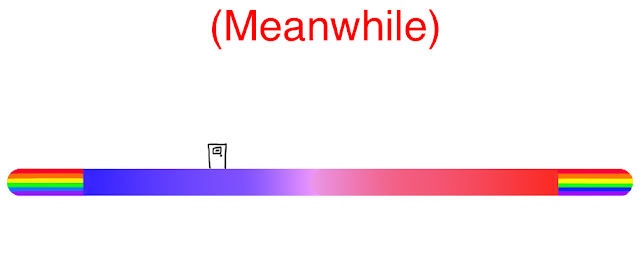After hitting his stride as the production designer on the TV show “Alias”, Scott Chambliss has risen to the top ranks of major movie productions. In the last few years Scott has worked on “Mission: Impossible III”, “Salt” and”Cowboys & Aliens”. He has also continued his collaboration with the director J.J. Abrams on the reboot of the Star Trek franchise. In this interview Scott talks about the traditional collaborative triumvirate of director, cinematographer and production designer and how that balance is shifting in the world of increasingly VFX-driven sci-fi productions, how advances in digital technology and global connectivity affect the current state of the visual arts, the approach he has taken to bring back the rich world of the original Star Trek universe to the modern audiences, his take on where human-computer interaction should go, and his thoughts on 3D productions.
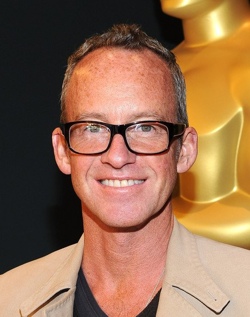 Kirill: Please tell us a little bit about yourself.
Kirill: Please tell us a little bit about yourself.
Scott: I’m a motion picture production designer, and I’ve also designed episodic television. I began in fine arts and theater design in school, and spent the beginning of my career in New York working on Broadway and regional theatre productions while keeping up on my own artwork, which included showing work gallery shows.
Kirill: Was “Alias” your first big-scale production?
Scott: Not at all. As a matter of fact, “Alias” came along at what I thought was the end of my career. A pause for a professional history recap: I’d done a number of assistant art direction jobs on large scale studio features shot in New York and then designed my own first small feature there, which led me to Los Angeles to try my luck as a full-time production designer. The projects I landed in LA over the next eight years were small features and episodic tv pilots plus a few mid-scale studio comedy features. While I met and continued to work with a handful of wonderful directors, producers, and other creative collaborators, none of those projects ever built real momentum for my career. They were all virtually invisible to the public as there was not an attention grabber or a box office hit in the bunch. By the time the “Alias” pilot rolled around I had resigned myself to the fact that I was probably in the last days of my efforts to be a production designer and was seriously exploring what else I might do for a living. I was still a young guy with a future to create, so maybe it was time to begin Act Two.
What I imagined to be my last gig in the biz, taking over the tv episodic “Felicity” in its third season, (when it was no longer even being tracked by the Nielson ratings because its viewership was so miniscule), unexpectedly turned into my game-changer. This job brought me into the same room with J.J. Abrams at a somewhat formative moment in his career, and we hit it off creatively and personally. Toward the end of that season of “Felicity”, JJ liked my work and how I did it, and he asked me if I’d do the new pilot “Alias” he’d just written and was going to direct. That pilot was the beginning of a creative relationship that I’d always hoped to have: mutually inspiring, always supportive, adventuresome to the point of riskiness, fueled by respect for the talents of each other. It’s more than ten years later, and I remain devoted to our working process together and grateful for any opportunity I have to work with J.J.
Kirill: People usually talk about the director, the cinematographer and the production designer as the trio in charge of defining the universe, the visual look and the atmosphere of the specific movie. Are you looking to be on the same brain wave length with your collaborators, or for more of a clash of different ideas?
Scott: The clash part of a job…or in life, for that matter… is not inspiring to me. I think there can be any number of different points of view on the piece of material that you’re collaborating on, and they’re each a necessary part of the collaborative discussion. However being rigid with a point of view is a rather limiting stance. There are many ways to tell a story, and the task of exploring approaches that aren’t your own is an interesting process. When there’s a mutual respect among the storytelling collaborators on a film, very nuanced tales evolve which are richer than a story any one of us would come up with on our own. The kind of team I am most at home with understands and supports this point of view. I know that’s not the way every film making collective in town works, and I’m well aware that some directors prefer a confrontational dynamic in their work environment. Having worked in a few of those situations myself, I’ve found that such an atmosphere to be anti-creative.

Left – on the set of “Mission: Impossible III”, photography: Scott Chambliss, courtesy Paramount Pictures. Right – on the set of “Cowboys & Aliens”, photography: Zade Rosenthal, courtesy Universal Pictures.
Kirill: Does that apply to the people you hire to work with you in the art department, starting with the art director, set decorator, set designers etc?
Scott: Definitely. A collaborative team is a collaborative team, no matter what the role of the participant, and the various departments I interact with need to function in a manner keeping with the whole. I think the achievement I am most proud of in my career is that I’ve been able to curate if you will the crew of my art departments over a long time so that they are peopled by gifted, inspiring artists who respect and support each other…and find great pleasure in doing so. Nothing makes me happier in my job…even when I myself am stressed beyond what I’d prefer…than to see my gang working their asses off and remain happy to do so despite their exhaustion. One team member who I’ve hired on a number of films and have watched her grow from a neophyte at her job to a sizzling ace told me at the end of our last effort together she felt I’d created the most inspiring and supportive art department environment in town. It may or may not be true, but given that I began my career in an art department ruled by a fearsome production designer, I took that as the ultimate tribute. Why on earth should positive reinforcement not be the most potent stimulus toward achieving tremendous results among extraordinarily talented professionals?
Kirill: Speaking about working your asses off, how was working on “Alias” where you have to shoot an episode every week or so, season after season? Looking back, was it worth the effort?
Scott: “Alias” was the best training ground I could have ever had to handle big budget features. The episodic tv pace was insane – every eight days you start shooting a new episode on an ambitious show while prepping the one that would immediately follow. We tried to take every episode, especially on the first two seasons, into the land of feature film scope and quality. Most ambitious shows rightly claim that now, but “Alias” was among the first ones that got away with attempting epic international scale primarily in-camera. And we did it on a very modest budget, unlike the big scale tv shows on cable now. For that reason, and because I had a great team of collaborators with very exacting expectations, the skill set you have to develop and the trust you have to gain in your instinct at that kind of pace is intense. You have to be super sharp, because there wasn’t a chance to do something over. You simply had to learn and move on. It was an exhausting and enlightening experience, and one that designing small films and pilots had never provided me. It was awesome, and I believe the reason I can tackle huge projects efficiently is directly related to my crazy ambitious episodic television design experience.
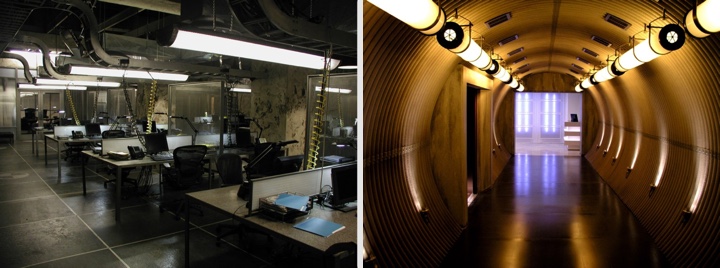
On the sets of “Alias”. Photography: Scott Chambliss, courtesy Touchstone Television.
Kirill: Usually on a TV show you have the same set of writers and producers, and then they bring in different directors and cinematographers every episode or two. Was it the same for you?
Scott: Yes and no. The directors were definitely hired guns, with only a few regulars like the marvelous Dan Attias. Director of Photography Michael Bonvillain was the only director on “Alias” in its first few seasons though, and that wasn’t particularly good for the show nor fair to him. He was never involved in the scouting or the prep, and for a DP who wants more creative collaboration on a project that’s an unhappy circumstance.
Kirill: If you look at some of the bigger budget TV productions in recent years, like “Lost” or HBO’s “Game of Thrones” and “Boardwalk Empire”, are you a little bit jealous about the budgets and the feature film-level exposure they are getting?
Scott: I think it’s great for them and exactly what they should have. Of course I wish we had that level of support back then for “Alias,” but it was never to be. “Alias” was more famous than it was watched and as a result never had a big episode budget. The current bigger budget design-oriented historical or fantasy cable shows are a great thing for the medium, and a boon for designers. I do think there is a larger diversity of interesting stories for designers being filmed for television right now than there are in the feature film world, much to my regret.
Kirill: Might that be connected to the advances in the TV hardware itself, from much larger screens to pervasive high-definition to improved frame rate and color gamut etc?
Scott: These advances aren’t specific to television. Ever-developing digital technology is the driving force in the industry right now, too much so for my taste. In significant cases, decisions about tools we work with are overriding the importance of how best to support the material itself. One of the results – and especially with the type of feature films that I work on – the end product is all starting to look more than vaguely the same. My peers and I each have the same tools at our disposal, the same new software, the same new techniques that we can use…and in many cases the same concept artists at our disposal.
Kirill: Are you talking about taking away the imperfections or optical differences in older lenses and the film medium itself?
Scott: I’m talking about the current visual styles in our design work, and the extravagant levels of detail we are able to achieve if we choose to. We also all have instant exposure to all latest developments in the visual realms which we refer to on a daily basis. I find we often are attracted to the same things. I can look at quite a few current films at any given time and know precisely what a designer is quoting in his design because I have the same imagery in my own collection. The unfortunate truth is that now some of us are working with the same reference sources at the same time and we discover a year later when our films are is released our movies look in some ways uncomfortably alike. It’s not a great discovery.
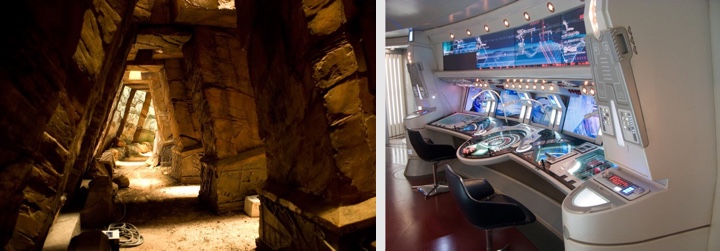
On the sets of “Star Trek”. Photography: Zade Rosenthal, courtesy Paramount Pictures.
Kirill: After “Alias” you went to these big tent pole productions like “Mission Impossible”, “Star Trek”, “Salt” and “Cowboys & Aliens”. Was that what you were talking about earlier? Was that the place you wanted your career to reach?
Scott: That’s where I started out in film, being on the art department team on big budget features in New York, being trained by a few wonderfully talented production designers. I definitely wanted to design my own big shows one day, but I didn’t know if I’d ever have the opportunity to. Achieving that kind of success is such a crapshoot, as it’s not only about working really hard and having talent. As cliched as it is, being at the right place at the right time is incredibly important, and that is something no one can ever engineer. I consider myself incredibly fortunate that I one day found myself in the right place at the right time.
Kirill: As you work on these big budget productions, is there a pressure of not only to create something good looking, but also to bring increasingly more money back to the studio?
Scott: I would say that all of us who are doing these kinds of productions are well aware of the reason these movies are being made: for the corporations who own the studios to make lots of money. However the personal pressure that I feel on these productions has nothing to do with the profit margin the movie may or may not make. My pressure is the responsibility to do the best creative work that I can can for the material at hand, and to find the most felicitous collaboration with my director, my DP and the rest of my crew that will enhance our storytelling capabilities. That’s a pressure I feel on a daily basis.
Kirill: Is there ever such a thing that you have just the right amount of money?
Scott: [Laughs] You know the answer. No matter how tiny or how huge the scale, the aspirations of any project are always so much bigger than the envelope we’re trying to stuff it in, and the moment that changes, I’ll let you know [laughs].

Kirill: What do you think about the digital tools that allow extending or even creating complete sets in the post-production phase? Does it take away from the physicality of the built sets, or as long as it looks good in the final product it doesn’t really matter?
Scott: I think there’s a reflex habit now to feel that you can do anything in post, do anything with visual effects to make a scenario work. But creating successful visual effects imagery is a very detail-oriented, very complicated task. You can’t just throw digital technology at your material and call it done. The same requirements of expert craftsmanship apply equally to the physical and digital worlds. When a set is conceived with visual effects as part of the canvas, the goal is always to enhance the overall environment rather than to weaken it.
Some stories require a significant amount of digital work. Science fiction can’t exist entirely without it, nor can the kinds of fantasy or action films we churn out. Still, I would never want to be the actor who has to create a performance wearing a mocap suit in a green or blue soundstage environment. How does a person convey an emotional reality when everything they see is divorced from the reality of their story? Yikes. It would be interesting to enter a filmmaking phase where digital effects are less fashionable. Wouldn’t it be amazing to go to a blockbuster movie in which the real star was the story, not the action/design/vfx? I would love that…and love to work on that.
Kirill: Does this also bring the visual effects supervisor into the traditional trio of the director, the cinematographer and the production designer? How does that change the balance?
Scott: This new balance is one of the challenges that production designers are negotiating now. Up to this point it’s the rare exception for the designer to continue to be involved in post-production to oversee the final manifestation of the design they’ve created for the film, and I believe that needs to change. I’m addressing this issue on my current job as I very much want to continue to be involved until the final design choices in post are made. How successful I’ll be with my efforts remains to be seen, and for production designers to be more generally accepted as an integral part of the post production team will happen incrementally on a case by case basis like mine if it is to happen at all. I imagine all of my peers want this same involvement as well. It is shortsighted for producers to hire a production designer to create a vision for a film but not allow them to participate in the completion of their vision. From personal experience, I know that some producers have never even thought about this issue.

On the sets of “Star Trek”. Photography: Zade Rosenthal, courtesy Paramount Pictures.
Kirill: You don’t hire the VFX supervisor, so you don’t really know that he or she will carry through your vision through the post-production phase.
Scott: That’s true. But I’ve worked with the same group of folks on most of my films, and we’re a mutually respectful gang. I’ve been fortunate so far in that there have been few significant changes to my designs in post. There have been smaller choices made on each film that I would have never made most certainly, but no significant game-changers.
Kirill: Have you seen the visual effects department become more aware of the art and design aspects, bringing perhaps more formal art education to their part?
Scott: That’s an interesting question. In the first of my effects-heavy movies I was introduced of a handful of extraordinarily gifted concept illustrators, all coming from the same school, a couple of whom became my primary collaborators up to this point. Two of them work for a major effects house now. In terms of the overall aesthetic education level of the artists in effects houses themselves, I can’t say that I’ve noticed significant advances because of the sheer number of effects artists it takes to create a sequence. Certainly, there are standout moments on occasion, like the tiger in “Life of Pi.” That was an extraordinarily successful and beautiful piece of work. What I think is more commonly noticeable is when vfx sequences don’t look up to snuff, which I think is not necessarily a product of the lack of artistry behind the wheel. It’s usually the result of not enough financial support from from studios who would rather squeeze an effects house to the point of collapse rather than pay what’s appropriate for the product. If you wonder what I’m talking about, look into the recent troubles of Rhythm and Hues.
Kirill: I was reading this interview with Rick Carter, the production designer of “Avatar”, and he said that he didn’t see the boundaries between pre-production, production and post-production. Was that specific to “Avatar”, or do you see this happening on your sci-fi productions as well?
Scott: “Avatar” was a specific case where the whole storytelling world was conceived as a primarily CG world, and what Rick said applied there. But for something more traditional where the bulk of the story takes place in complete in-camera environments like what I’ve been doing, there is the traditional separation of phases in the filmmaking process. Perhaps the boundaries he’s speaking of refer to the idea that there is no creative separation between the phases, and if that is the case I completely agree with him.
Kirill: I always bring the case of “Sky Captain and the World of Tomorrow” that was perhaps ahead of its time in terms of trying to do everything on green screen when the VFX technology was not yet able to deliver complete believable sets. Will this ever be a good thing to do in your opinion?
Scott: It’s impossible to make a broad judgement whether it will be good or not so good in general. I’m sure as a stylistic choice such an approach might be ideally suited for some material. No single technical approach can work well for every kind of material however.
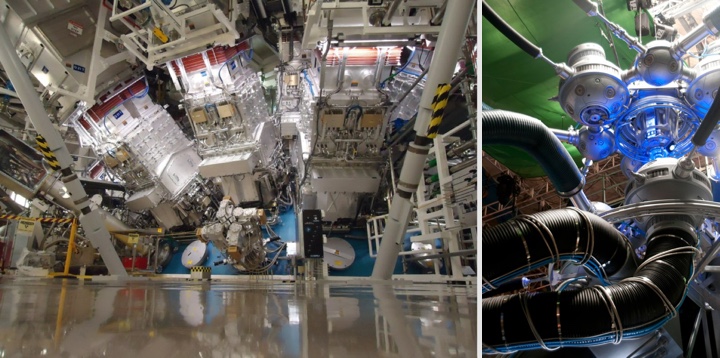
On the sets of “Star Trek Into Darkness”. Photography: Zade Rosenthal, courtesy Paramount Pictures.
Kirill: Bringing that to the second “Star Trek” I noticed there was a lot of physicality in the frame. Almost every scene had close-ups of something being touched by the actors, and I’ve read an interview about J.J. Abrams insisting on having as much as possible being filmed in camera. Is it better for you, not only to design a set on paper, but also to have it physically built and see the actors interact with it?
Scott: Yeah, that’s the fun of the job for me, creating the physical worlds. One of the reasons I love working with J.J. is that he much prefers to have the real world in the camera lens and not rely heavily on green screen techniques. I’m discovering this is also true for the director I’m working with now, Brad Bird, much to my delight.
Kirill: Does that also guide you somehow in your initial explorations to design something that will be relatively feasible to build physically?
Scott: When I begin to imagine the world of a film, I don’t think in terms of what is going to be a built set and what is going to be a CG set. When the world comes into focus, then come the case by case decisions regarding how to achieve the environment most successfully. Such decisions are made balancing the creative needs with our practical financial, logistical, and scheduling realities.
Also, I don’t have strong preferences in terms of how we achieve our sets. It’s incredibly exciting for me to build physical sets for the camera, and just as exciting to work with a larger vfx enhanced canvas. Each satisfies a different but related creative impulse. However, the pleasure that I have of walking into a completed set on the first day of shooting is a very exciting thing to me, whereas walking on a green screen stage with a board of concept sketches showing what it’s going to look like in the final edit is rather anticlimactic.
Kirill: Going back to “Star Trek”, did you need to spend extra time on the first one to get familiar with the existing universe and to know all the details, especial given how meticulous some of the hardcore fans of the franchise are?
Scott: I don’t think I have enough time in my lifetime to be aware of all the details in the “Star Trek” universe that hardcore fans care about, but I definitely enrolled in an All-Things-Trek crash course when I began to prep that first adventure. What we paid attention to was the original tv series and not as much to anything else that followed. Redefining “Star Trek” for current audiences was a huge challenge for both J.J. and I. Paying homage to what Gene Roddenberry’s original intentions were without following literally in those footsteps was our primary rule.

On the sets of “Star Trek Into Darkness”. Photography: Zade Rosenthal, courtesy Paramount Pictures.
Kirill: Was it then simpler to get into the sequel, getting back to the universe that you’ve built and expand to places that you didn’t have time for in the first installment?
Scott: It was lot more fun having our foundation already in place. We knew what the Starfleet world was, and we knew who our characters were. The idea of being able to reveal more of their world was very exciting. Not needing to redefine the Enterprise Bridge again or rework any of the canon items was a huge relief [laughs].
Kirill: Did you try to take the sequel to new visual places, like spending much more time on the Enterprise Bridge?
Scott: The story gave me the opportunity to reveal more of the Enterprise ship itself. The grandest example of that was our warp core engine room, which was a combination of an elaborately detailed location and two constructed stage sets. I feel that set anchored the Enterprise in a more believable scope and detail than we had been able to achieve in our first “Trek.”
Kirill: From my own perspective as a software engineer working primarily on user interfaces, I’m very interested in seeing how the future human-computer interaction is portrayed in sci-fi productions. Who did you approach that part of the bridge? How do you project what is available now 250 years into the future?
Scott: Ah, a trick question from a software engineer! Well, what I can share in that regard is on the first “Star Trek” we were talking with some of the creative designers from Nokia about how they were imagining cell phones and personal communicators might evolve over the next ten to a hundred years. His response was the same one I offer you right now: technology changes so quickly it’s virtually impossible to project much beyond three years from now. Technology is continuously reinventing itself based on what came immediately before…but the evolutions can be either in harmony with what came before or in contrast to it. I don’t know what’ll happen next, but I can tell you where I hope it goes. I hope that technology becomes more invisible. We currently spend so much of our time looking at screens, and this in itself is an isolating experience. I would love for technology to recede into the background and reintroduce primary human interaction as the norm, replacing the preponderance of digital communication options we so rely on now. As a culture we become less socialized and therefore less skilled in human interaction, which leads to a diminishment of civilization within a society. There’s no missing the sense of interactive dislocation that is firmly wedged into our culture these days.

Kirill: You designed the Enterprise Bridge with no inner walls and a lot of transparent screens. Was that to highlight the instant collaboration between the officers?
Scott: Certainly. There are all sorts of inter-relationship metaphors in that space. In the second “Star Trek” is an environment that is the Bridge’s counterpoint: a very small undercover ship that Kirk, Uhura and Spock are flying into Klingon space. The three are driving the ship together, facing different directions in seats with their backs to each other. It’s a scene of serious emotionally complex dialogue between them all occurring while they drive the ship together with no sight or awareness of what the other is doing. That set design physically manifests their personal disconnection from each other at that moment in the story.

On the set of “Star Trek Into Darkness”. Photography: Zade Rosenthal, courtesy Paramount Pictures.
Kirill: You’ve designed some very nice big open spaces for the Starfleet Academy – the lobby, the admiral’s office, even the conference room where they are attacked by Khan.
Scott: Those kinds of sets are a pleasure to design… but so are small dusty western towns. One of the things that I most enjoy about my job is that, unless I’m doing sequel to something I’ve done before, the material I’m working on is usually a new subject matter to me. I approach each project as if it were a graduate thesis project, learning everything I possibly can about the kind of movie I’m setting out to make. I’m not a product of film school, though. I have an art and theater background, so what I show up to the party with has everything to do with my engagement with the arts worlds, with my extensive experience traveling the world, with the kinds of literature I read and the kinds of adventures I’ve had rather than all of the films I’ve studied. This means I have a lot of film studies to catch up on to see what any given genre’s cannon is comprised of. This helps give me context for our project and also educates me to I don’t cover territory others have already covered in past work.
So yes, when I get to design expansive sparkly spaces, that’s great fun. And when I get to create corrosively dank and nasty environments, that’s fun too. But I can find just as much satisfaction with every-day reality stories where every simple detail is a deeply articulate and vital storytelling component to the movie. If a designer is successful, this kind of world is so believable that the audience doesn’t pay any attention to it. For the production designer on this kind of project, he is the poetic Invisible Man, and there’s fun to be had there too.

On the sets of “Star Trek Into Darkness”. Photography: Zade Rosenthal, courtesy Paramount Pictures.
Kirill: Is it part of your job that when you do it well, people don’t notice all these little details?
Scott: I believe that best of our work doesn’t draw attention to itself just for the sake of doing so, even in the most visually elaborate or complicated films. To me the Bertolucci movie “The Conformist” [1970] is one of the most successful pieces of film design ever created. It’s intricately expressive, surprising, full of vivid metaphor, so much so that the visual world of that story is as forceful as any single character in it. This is an awesome achievement for a production designer, to create that impact in a way that is flawlessly interwoven into the whole fabric of the film. “The Conformist” being designed any other way would have made it a completely different film.
Kirill: Looking at your last few productions, “Mission Impossible”, “Salt”, “Star Trek”, “Cowboys & Aliens”, “Star Trek Into Darkness,” is there a favorite one? Or perhaps the moment you’re done it’s a job fading into the past?
Scott: When I’m doing a job, I do have favorite moments or favorite set details and pieces, which tend to change rather rapidly depending on what I’m focusing on. But when the job is over, so is any attachment to it beyond gratitude for the experience. I’m proud of the work that I do, but I tend not to revisit it other than seeing the movie in its initial release. What’s the point?
The ephemeral nature of the work we do in film is a quality that suits my personality. I create imaginary worlds for fictional characters to live a story of our own creating. We build their worlds, they live their stories and are gone. Then their world disappears. I love it when a set goes up, and I love seeing them come down. There is no trace of permanence in that construct, just a filmed document of it and a blank spot on the planet where the physical story was once told. There’s a fluidity to the process that feels very natural to me.
Kirill: What are your thoughts on shooting or post-converting movies to 3D? Even though it’s mostly confined to big sci-fi movies, there are a couple of more mainstream productions that went there, like “The Great Gatsby” or “Hugo”.
Scott: The reintroduction of 3D into the film going experience to me is a purely profit-motivated move on the studios part. The technique is not with us again because we’ve decided it makes our stories better. Some directors like Cameron and Luhrmann are attempting to expand 3D creative boundaries on their projects, but the jury is out whether the technique will become accepted as a standard film making tool across the board or be universally enjoyed by the audience. As a viewer, I don’t enjoy the experience of watching a movie in 3D and I do my best to avoid it. The only film I’ve seen that not only justified the use of 3D but made viewing it a wonderfully transformational experience for me was Wim Wenders’ documentary on Pina Bausch and her dance troupe. His camera entered the dances with the dancers, and as a viewer I did too. It was thrilling. The clue here may be that the most suitable creative material for 3D filmmaking is more poetic and abstract storytelling, not the narrative tales we mainstream filmmakers produce.

And here I’d like to thank Scott Chambliss for this wonderful opportunity to peek into a fascinating world of major motion picture production design, and for sharing his thoughts on his art and craft. Scott is currently working on “Tomorrowland” due in theaters in December 2014.

 It is difficult not to fall for the design creativity and layout this contemporary Swedish apartment puts on display! Located in Gothenburg, Sweden, in a beautifully renovated building, this home preserves charming details of the past, including an original turn of the century fireplace. Despite its relatively small surface of 60 square meters, the crib (initially discovered by Freshome on Alvhem) seems to have it all. A small hallway with just enough storage space leads the way towards the kitchen, living room and bedroom. Each of these interiors is personalized and exudes a welcoming feel.
It is difficult not to fall for the design creativity and layout this contemporary Swedish apartment puts on display! Located in Gothenburg, Sweden, in a beautifully renovated building, this home preserves charming details of the past, including an original turn of the century fireplace. Despite its relatively small surface of 60 square meters, the crib (initially discovered by Freshome on Alvhem) seems to have it all. A small hallway with just enough storage space leads the way towards the kitchen, living room and bedroom. Each of these interiors is personalized and exudes a welcoming feel. Walls painted in a lovely shade of white subtly contrast the classic oak floors in the living room. The former inhabitants of the apartment decided to break down the dividing wall between the kitchen and living space, resulting in an original open floor plan. However, our favorite interior remains the bedroom, with its serenity-inspiring color palette, king-sized bed and plenty of natural light.
Walls painted in a lovely shade of white subtly contrast the classic oak floors in the living room. The former inhabitants of the apartment decided to break down the dividing wall between the kitchen and living space, resulting in an original open floor plan. However, our favorite interior remains the bedroom, with its serenity-inspiring color palette, king-sized bed and plenty of natural light. 
















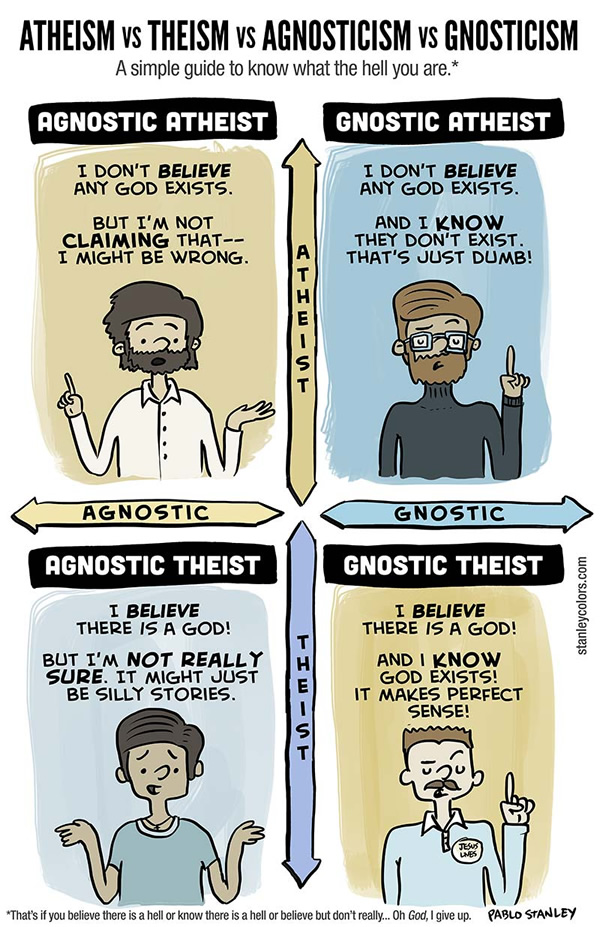











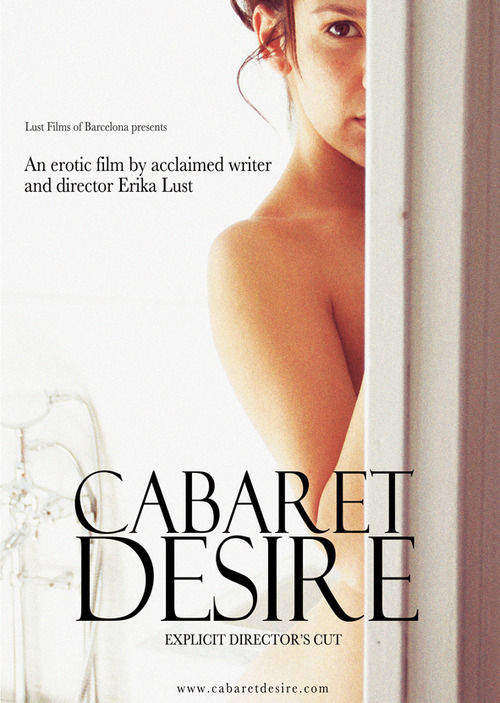

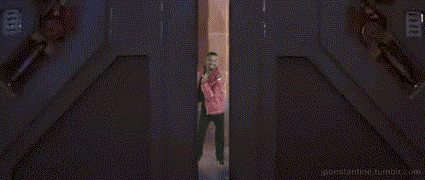
 Unbounded Robotics' founding members with UBR-1.
Unbounded Robotics' founding members with UBR-1.





























